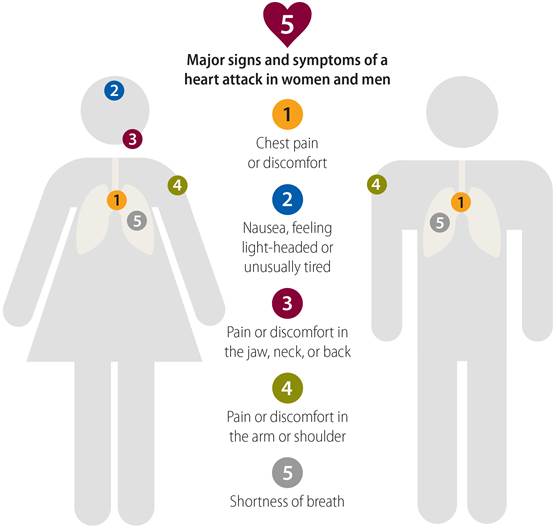The Common Symptoms of Angina
Angina pectoris, commonly referred to as angina, is a medical term for abdominal pain or discomfort related to heart disease. It normally occurs after coronary heart disease has affected the lining of the coronary artery. It usually occurs when the coronary artery does not receive as much blood as it requires due to blockage or narrowness of the arteries. This usually occurs due to heart disease that is in its early stages or in a person who has had myocardial infarction.
If left untreated, angina can lead to pericardial effusion and a fall in heart function that may require medical treatment. As a result of this, angina should be treated at the onset of its symptoms. It is important to know the most common causes of angina so that you can prevent it and deal with it more effectively if and when it occurs.
Cardiovascular diseases are the main causes of angina, although it is possible for angina to occur because of coronary artery disease (CAD) as well. The major symptom of CAD is chest pain, usually severe, radiating from the chest to the upper left back. The pain often becomes worse at night. Patients suffering from CAD, have a higher risk of developing angina as well, because the coronary artery can become damaged and narrowed.
Patients diagnosed with coronary artery disease may experience either angina that comes with pain, or pain and no angina. In some patients, angina will decrease over time, whereas in others, angina is constant or persistent. Patients diagnosed with CAD are at increased risk of experiencing angina after their first heart attack. Patients who are already on medication and who are suffering from coronary artery disease are at increased risk of developing angina.
Coronary artery disease can also cause pain in the chest and in the upper left arm, which can radiate to the right shoulder and elbow. Patients with coronary artery disease who have undergone angioplastics surgery have increased risk of developing angina after their coronary artery surgery, but this is rare.

When the coronary arteries of an artery-pilfermed patient become narrowed or blocked due to atherosclerosis, they can develop angina. Atherosclerosis is a condition where the platelets, a type of blood cells that helps to transport oxygen and nutrients to the body, fail to do their job properly. Atherosclerosis can be a result of a build up of plaque, caused by fatty deposits that form on the arterial walls. The plaque collects in arteries, causing the artery walls to harden and the arteries to swell.
Angina that comes with pain often involves pain in the upper chest area, as well as pain in the arms or lower back. However, other symptoms that may accompany angina are palpitations, dizziness, nausea, and shortness of breath.
Although angina is treatable, angina should be treated as soon as possible. If you suffer from angina, try to understand the source of your pain and determine the source. By identifying the source of the pain and how to deal with it, you can avoid a heart attack or treat angina to reduce the likelihood that you will suffer a heart attack in the future.
Patients diagnosed with coronary artery disease are at increased risk for developing angina after their first heart attack, but this is uncommon. Patients who are already on medication and who are suffering from coronary artery disease are at increased risk of developing angina after their first heart attack, but this is rare.
Patients diagnosed with coronary artery disease can prevent angina by keeping their cholesterol levels down. Patients diagnosed with coronary artery disease are at increased risk for developing angina if they take medications to lower their cholesterol levels. It is important to take control of your cholesterol levels, as well as to treat any other conditions that may be contributing to your increased risk.
Angina is a symptom of artery clogging, which is often caused by atherosclerosis. Angina that comes with pain is usually caused by a lack of oxygen to the heart.